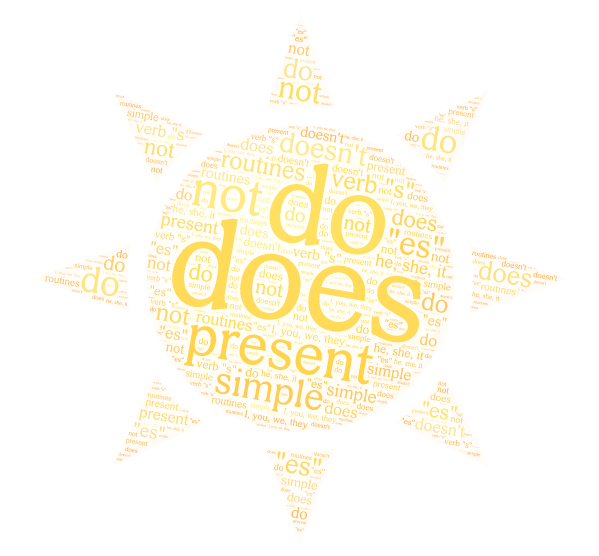Content
Look at the following information. It will help you to answer the activities and practice the Present simple tense.

The simple present structure refers to now. It can be employed to represent routines, states, descriptions and likes.
Unlike Spanish, the number of conjugations in English is smaller and easier to use. The only complication is the differentiation of subjects. The subjects are the actors or performers of actions and can be classified into four categories:
| Category | Example |
|---|---|
| Proper names | John, Ana, Joe and Philip, Bates School, Hachiko… |
| Common names | my cousin, my friend, the boys, the school, my dog… |
| Pronouns | he, she, they, it, he… |
| Synonymous words or phrases | the poor guy, the girl, these two, the institution, my little |
The differentiation of the subject determines the form in which the verb has to be conjugated. Let’s take the verb OPEN as an example. To represent the routine, we can add a circumstance or context (space, time, mode, etc.).
- John (he) opens his grocery early.
- My friend (he/she) opens the doors of La Fonda Doña Inés.
- The boys (they) open their videogame console every weekend.
- It opens on weekdays.
- My little (he/she) opens the door by himself/ herself.
Remember: The differentiation of subjects determines the type of conjugation.
An auxiliary (do/does) is necessary:
- John does not open his grocery in winter.
- My friend does not open the windows of his bedroom in windy days.
- The boys do not open the umbrella for rainy days.
- It does not snow in Ana’s city.
- My little does not like the cold.
Additionally, the differentiation of subjects determines the type of the auxiliary. Keep in mind that after the auxiliaries the verbs in the sentence remain unconjugated.

An auxiliary (do/does) is necessary:
- Does it rain a lot in May in your city?
- What do you wear when it’s too cold?
- Do the people in the U.S. use umbrellas in the sun?

Also, descriptions of weather or related to weather can be made with the use of the present simple. If you use the word BE there are three ways of doing it:
- I am always a bit cold in winter, but I am not when I have my coat on.
- The weather in Mexico is not so extreme; rather, it is benign.
- The people in my city are not used to snow, but they are used to the problems caused by the climate.
Remember: For the negative form you add the word NOT to the auxiliary.

BE in descriptions is easy to use. However, in questions you change the order:
- It’s cold in this building. Is it cold outside?
- They’re happy for the sunshine. Are they happy in cloudy days?










